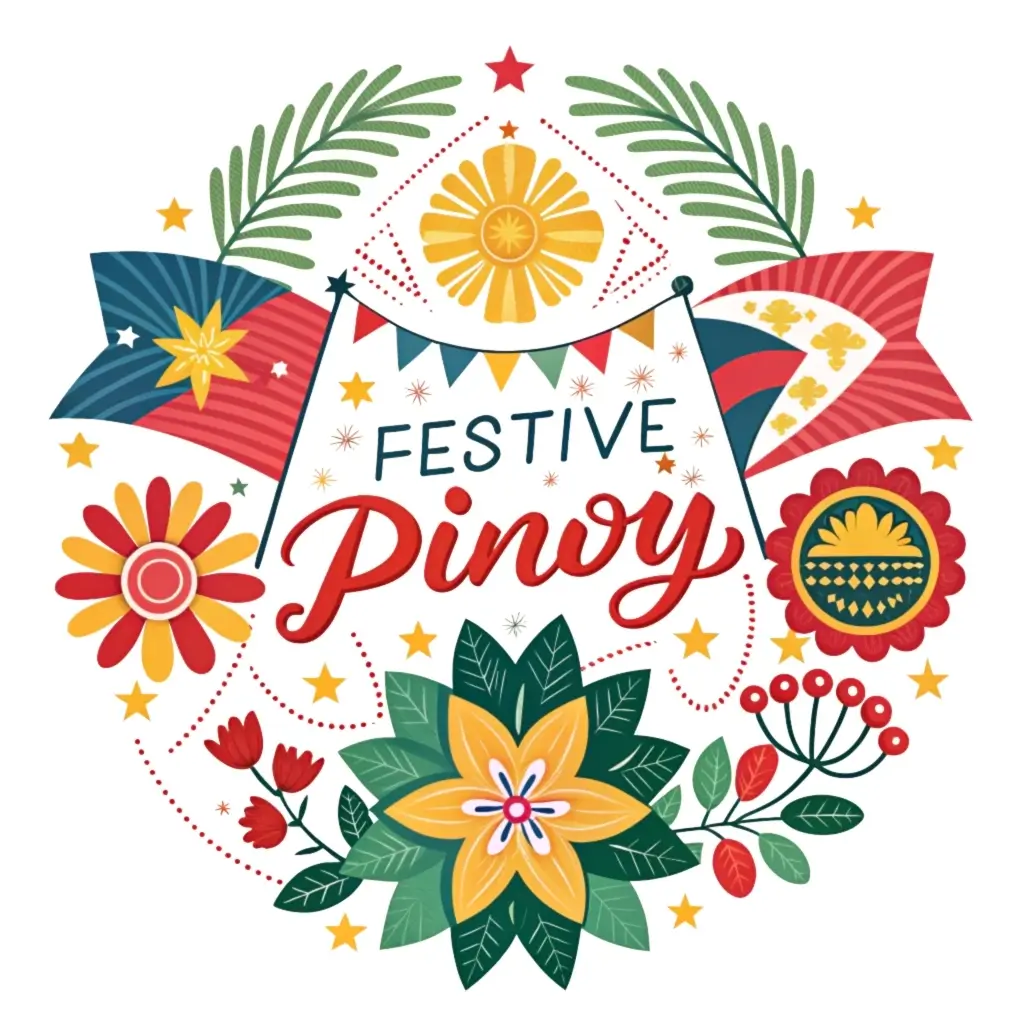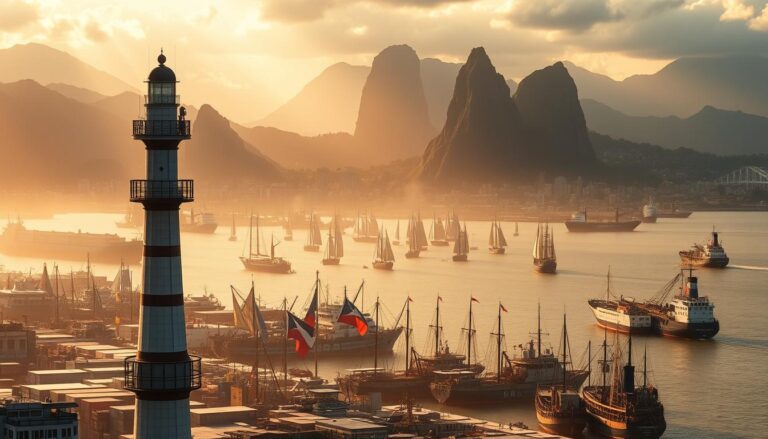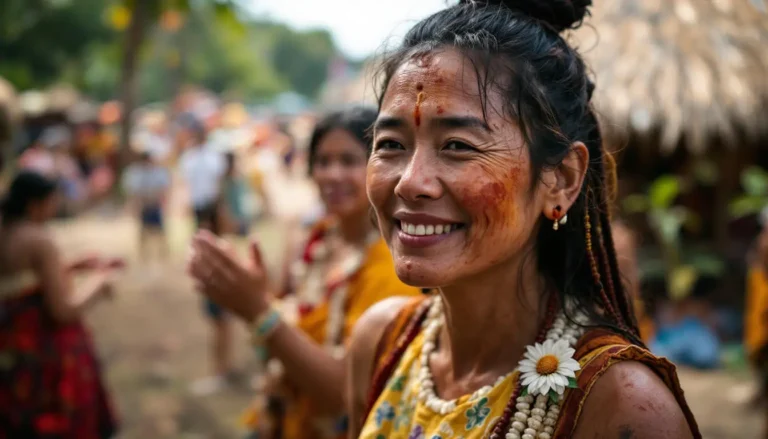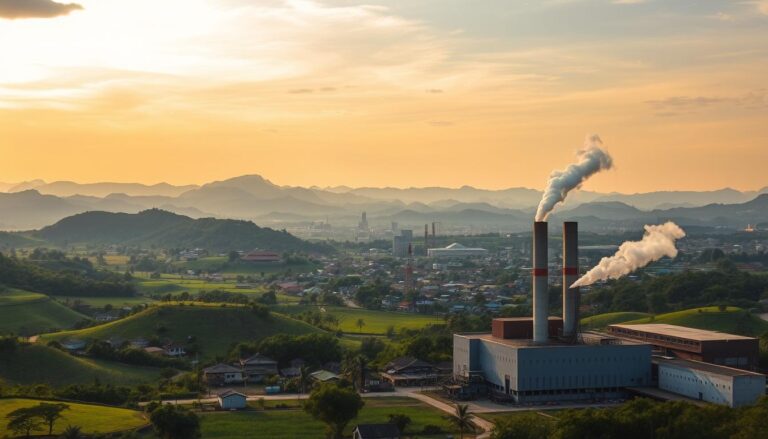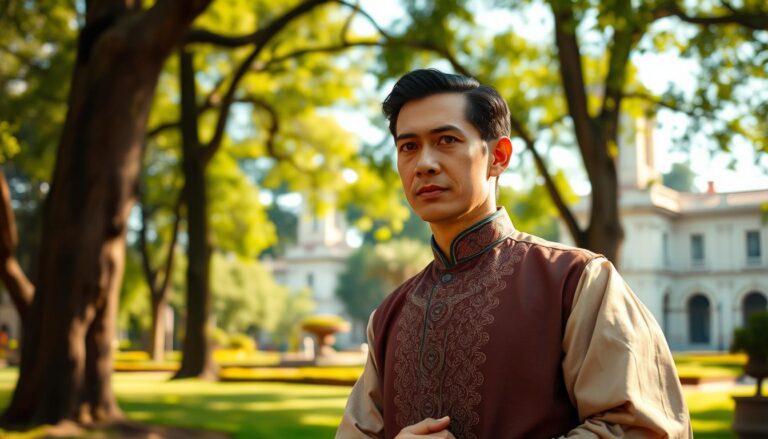Discover the Indigenous Tribes of the Philippines
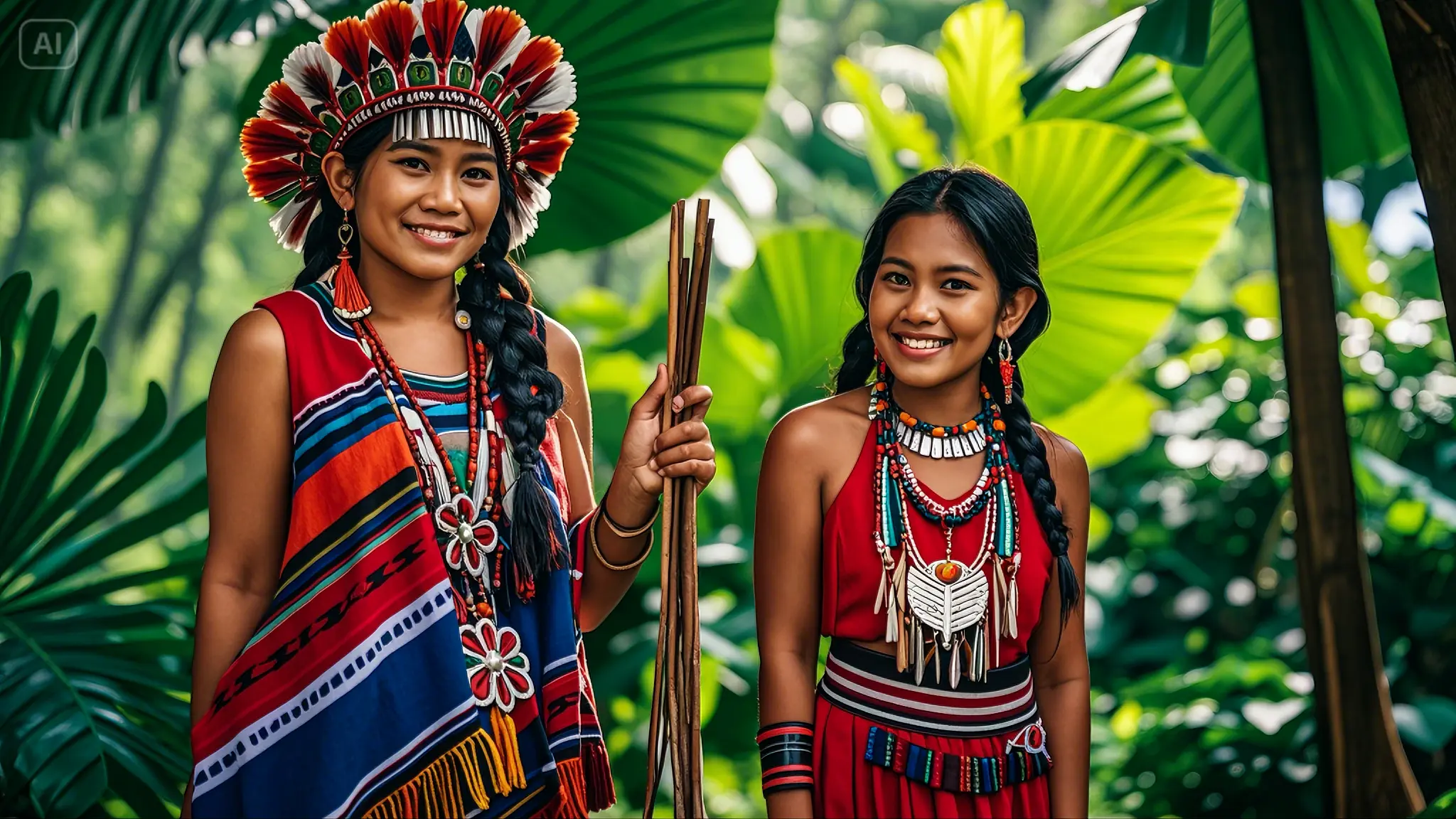
Explore the cultural richness of the Philippines through its indigenous communities. This journey highlights the lives of various ethnic groups, including lowland Filipinos and other native communities. With over 100 distinct tribes, each group offers a unique blend of traditions, lifestyles, and heritage, maintained through generations.
Admire the world-renowned rice terraces sculpted by the Ifugao people or join the vibrant Ati-Atihan festivals, which celebrate the heritage of groups like the Manobo tribe. These cultural treasures represent the resilience and creativity of indigenous communities.
These communities reflect stories of adaptation, a harmonious relationship with nature, and exceptional craftsmanship. Through this exploration, you’ll gain a deeper appreciation of their enduring legacies.
Key Takeaways
- Exploring the diverse indigenous tribes and groups of the Philippines reveals a rich mosaic of cultures, traditions, and people that are unique to each tribe, highlighting the country’s vast cultural heritage.
- Understanding the unique cultures and traditions of these indigenous people and groups, from their rituals to their social structures, offers valuable insights into human diversity and resilience in the Philippine context.
- The challenges in preserving these cultures, particularly those of indigenous people and tribes such as the Philippine group, emphasize the need for concerted efforts toward cultural sensitivity, education, and legal protection to ensure their survival for future generations.
- Profiles of selected tribes, including indigenous people from the Philippine group, provide concrete examples of this diversity and the specific issues they face, serving as a call to action for both local and global communities.
- The concept of ancestral lands is central to the identity and survival of indigenous tribes, including the Philippine group, underlining the importance of respecting and protecting these lands from external threats.
- Looking towards the future, it’s crucial to foster an environment where the rights and traditions of indigenous peoples, including the Philippine group, are respected, allowing them to thrive while maintaining their unique cultural identities.
Indigenous Tribes of the Philippines
Island Diversity
The Philippines, an archipelago with 7,641 islands, reflects its rich cultural diversity through its indigenous communities. These groups showcase unique traditions shaped by their environments and histories.
In Luzon, the Ifugao people are celebrated for their rice terraces, which are part of the UNESCO World Heritage Sites. These terraces, carved into mountains over 2,000 years ago, demonstrate advanced irrigation techniques that utilise natural water sources. This achievement highlights their deep understanding of environmental management and sustainable agriculture.
The Visayans, numbering about 33 million, form the majority in the central islands. Known for their seafaring culture, they have historically played a key role in maritime trade, connecting the Philippines to neighbouring countries like Indonesia and Malaysia. Their shipbuilding skills and traditional navigation methods passed down through generations, are integral to their identity.
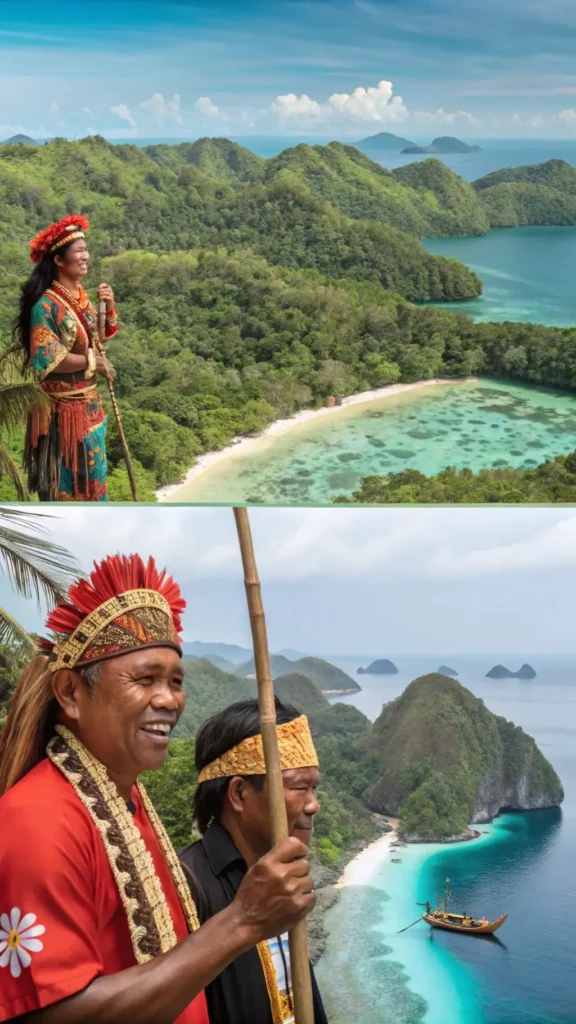
In Mindanao and Western Visayas, tribes such as the Manobo and T’boli preserve unique artistic traditions. The T’boli are known for their T’nalak weaving, using abaca fibres dyed in intricate patterns that reflect their dreams and spirituality. The Manobo, spread across various regions, practice elaborate rituals tied to agriculture, hunting, and tribal leadership, reflecting their connection to ancestral lands.
Cultural Identity
Amidst the pressures of globalization, indigenous tribes in the Philippines have demonstrated remarkable resilience in preserving their cultural identity. Traditional languages, spoken by these communities, function as more than communication tools, they are repositories of oral histories, legends, and songs that encapsulate the unique essence of each tribe. However, many of these languages are endangered, making revitalisation efforts crucial for sustaining this heritage.
Distinctive attire reflects the artistry and pride of these groups. The T’boli are renowned for their T’nalak weave, created from abaca fibres dyed with intricate patterns that carry spiritual significance. Similarly, the Ifugao people showcase elaborate beadwork and traditional garments that signify social status and mark important life events.
Rituals and ceremonies remain vital for preserving cultural heritage. These practices, deeply rooted in ancestral traditions, provide a sense of belonging, reinforcing connections to both community and heritage. Ceremonies such as harvest festivals, healing rituals, and rites of passage ensure that these traditions are passed down, sustaining a collective identity.
Central to this preservation are ancestral domains, which act as living repositories of tradition. These lands are integral to the tribes’ existence, providing not only sustenance but also a space for cultural expression. They safeguard practices like traditional farming, fishing, and hunting, ensuring that these communities continue to thrive while staying connected to their roots.
Resilience and Richness
Indigenous tribes in the Philippines have endured centuries of colonisation and modern challenges with remarkable resilience. Their history includes persistent resistance to foreign rule and steadfast efforts to protect their territories from exploitation by external forces, including modern industries. These struggles underscore their determination to preserve both their sovereignty and cultural identity.
Despite these adversities, indigenous cultures remain dynamic and thriving. Their resilience is reflected in vibrant art, music, and social practices that have adapted over time while maintaining their roots. The richness of their cultural traditions can be seen in their elaborate rituals, intricate weaving techniques, and a deep spiritual connection to nature. The T’boli‘s T’nalak weaving and the Ifugao rice terraces exemplify the harmonious integration of art and environmental stewardship.
Art forms, such as traditional dance, sculpture, and body adornments, serve as more than mere expressions of creativity they hold deep spiritual significance and convey the tribes’ enduring connection to the earth and their ancestors. For example, the Manobo dances often mimic the movements of animals, symbolising their unity with nature.
A key factor in preserving these traditions is the intergenerational transmission of knowledge, where elders pass down ancient skills, stories, and wisdom to younger generations.
Unique Cultures and Traditions

Northern Luzon Practices
In the mountainous regions of Northern Luzon, the Igorots are renowned for their advanced rice terrace farming. These terraces, such as the iconic Banaue Rice Terraces, represent over 2,000 years of sustainable agriculture and innovative engineering. Constructed with stone walls and complex irrigation systems, the terraces are a critical source of food and a symbol of their cultural identity, requiring meticulous maintenance and collective effort from the community.
Rituals and community gatherings remain central to daily life among these tribes. Celebrations such as harvest festivals and ceremonies to honour ancestors reinforce social cohesion and spiritual beliefs. These rituals often include traditional chants, music, and the use of locally crafted items like rice wine and woven mats, each imbued with cultural significance.
The Kalinga people are widely recognised for their traditional tattooing or “batok”, which signifies bravery, beauty, and social rank. These tattoos are created using natural tools like thorn needles and charcoal-based ink. Historically, warriors received tattoos as marks of their victories in battle. Today, this practice has gained international attention for its cultural importance, with efforts underway to preserve the art amid changing societal trends.
In addition to tattooing, the Kalinga excels in weaving and basketry, producing vibrant textiles and functional tools. These crafts are not only utilitarian but also play a role in ceremonial life. For instance, woven patterns often reflect tribal stories, beliefs, and connections to nature.
Central Philippines Tribes
The Badjaos, often referred to as “sea gypsies”, are a nomadic people historically found in the waters of the Sulu Archipelago, Zamboanga Peninsula, and other coastal areas of the Central Philippines. Their stilt houses, built above tidal flats, and their use of lepa boats demonstrate their dependence on the sea. Historically, the Badjaos played a significant role as maritime traders and navigators, connecting various islands through their extensive knowledge of sea routes. However, centuries of marginalisation, including displacement by more dominant groups and conflicts in Mindanao, have forced many to migrate to urban areas where they face social and economic challenges.
On Panay Island, the Ati tribe is considered the first inhabitants of the island. The Ati are descendants of the Negrito people, among the earliest settlers in the Philippines, arriving thousands of years ago via land bridges during the Ice Age. They retain distinct physical features, such as dark skin and curly hair, linking them to their ancient origins.
The Ati-Atihan Festival, celebrated in January, honours their historical role in the Barter of Panay, a legendary event where the Ati sold or exchanged parts of their land to Malay settlers in exchange for goods. Today, the festival combines indigenous traditions with Catholic influences, reflecting the blending of cultures while preserving the Ati’s identity.
The Tumandok tribe, also known as the Panay Bukidnon, resides in the mountainous regions of Panay. They are direct descendants of the 10 Bornean datus who, according to legend, settled in Panay after fleeing political oppression in Borneo. The Tumandok have historically practised slash-and-burn agriculture, locally known as kaingin, and engage in traditional weaving and oral storytelling to preserve their heritage.
Their resistance to industrialisation, particularly large-scale dam projects in their ancestral lands, has been a defining aspect of their modern history. These efforts are a continuation of their centuries-long struggle to safeguard their culture and environment.
| Tribe | Key Locations | Cultural Practices | Historical Significance | Current Challenges |
|---|
| Badjaos | Sulu Archipelago, Zamboanga Peninsula, Coastal Central Philippines | Seafaring, stilt houses, lepa boats, maritime trade | Maritime traders, navigators, displaced by conflict and modernisation | Displacement, marginalisation, loss of traditional practices |
| Ati | Panay Island | Ati-Atihan Festival, dance, storytelling, barter traditions | First inhabitants of Panay, descendants of Negritos, linked to Barter of Panay | Integration of indigenous traditions with modern influences, land disputes |
| Tumandok | Mountainous regions of Panay | Traditional weaving, oral storytelling, slash-and-burn agriculture | Descendants of 10 Bornean datus, resist industrialisation to protect ancestral lands | Industrial development threats, maintaining cultural heritage and land rights |
Southern Islands Customs
In Mindanao, the Lumads, a collective term for non-Muslim indigenous groups, rely heavily on natural resources for both livelihood and cultural practices. Their way of life is deeply tied to the environment, which shapes their traditions, from agriculture to rituals. For instance, farming and hunting practices often include ritual offerings to deities and spirits believed to protect the land and its people.
Musical traditions among Mindanao tribes stand out for their use of unique instruments like the kulintang, a set of gongs played in rhythmic patterns, and the kudyapi, a two-stringed lute. These instruments are integral to storytelling, rituals, and celebrations. The music often conveys ancestral stories, historical events, and spiritual aspirations, serving as both a cultural archive and a means of community bonding.
The Manobo subgroups, one of the largest indigenous groups in Mindanao, practice communal land management, a system based on collective ownership and shared responsibility. This approach ensures the sustainable use of forests, rivers, and farmland, fostering long-term environmental stewardship. Such practices are rooted in their belief in the interdependence of humans, nature, and spiritual forces. This system also reinforces community ties through mutual support, as members work together to preserve resources for future generations.
Despite their resilience, the Lumads face modern challenges, including displacement due to logging, mining, and industrial projects. Efforts to reclaim and protect their ancestral lands continue, often through advocacy and alliances with non-governmental organisations.
| Aspect | Details |
|---|---|
| Group | Lumads (collective term for non-Muslim indigenous groups in Mindanao) |
| Key Locations | Various regions in Mindanao |
| Cultural Practices | Agriculture, hunting with ritual offerings, communal land management, and spiritual traditions |
| Unique Musical Traditions | Use of instruments like kulintang (set of gongs) and kudyapi (two-stringed lute) for storytelling and rituals |
| Environmental Practices | Communal land management for sustainable use of forests, rivers, and farmland |
| Spiritual Beliefs | Deep connection to nature and spiritual forces influencing rituals and traditions |
| Key Challenges | Displacement caused by logging, mining, and industrial projects; land reclamation efforts |
| Cultural Preservation Efforts | Advocacy and partnerships with NGOs to protect ancestral lands and promote rights |
Challenges in Preservation
Non-recognition Issues
Many indigenous tribes face non-recognition by their governments, a situation with severe political and social implications. This lack of formal recognition denies these communities legal standing, making it difficult to claim ancestral lands, participate in political processes, or access basic services like healthcare and education. For example, indigenous groups often struggle to obtain official documentation such as birth certificates, further limiting their access to resources and opportunities.
The absence of recognition also marginalises their languages, traditions, and histories, leaving them vulnerable to erosion. Without institutional support, indigenous knowledge systems, which are key to cultural survival, face the risk of extinction.
Marginalization Effects
The marginalisation of indigenous peoples exacerbates socio-economic challenges, particularly through the loss of traditional lands. External pressures, such as commercial agriculture, infrastructure development, and land grabbing, have displaced many tribes from their ancestral domains, stripping them of their primary means of subsistence. Without access to land, traditional practices like farming, hunting, and fishing become nearly impossible, leading to economic instability.
This displacement also has profound psychological effects. Many community members experience a sense of loss, confusion, and a weakened cultural identity when separated from their land. These effects are particularly damaging for younger generations, who may feel disconnected from their heritage and traditions.
Historically, this marginalisation stems from colonial systems that undermined indigenous governance and legal rights. The pattern continues in many regions where Indigenous voices remain excluded from decision-making processes regarding land and resource use.
Environmental Threats
Indigenous lands are increasingly threatened by deforestation, mining, and climate change. These activities degrade the environment, making it harder for indigenous peoples to sustain their way of life.
Yet, indigenous knowledge holds key insights into environmental conservation and sustainability. Despite this, environmental degradation continues to threaten their livelihoods and cultures. The loss of biodiversity and natural resources directly impacts their food security and traditional practices.
Profiles of Selected Tribes
Cordillera Peoples
The Cordillera peoples of Northern Luzon are renowned for the Banaue Rice Terraces, a UNESCO World Heritage Site. These terraces, carved over 2,000 years ago, demonstrate advanced hydraulic engineering and sustainable agriculture, with irrigation systems channelling water from mountaintop forests to the fields.
Preservation of ancestral domains is a central concern for tribes like the Ifugao, Kankanaey, and Bontoc. They actively resist threats such as mining, logging, and commercial agriculture, leveraging legal protections like the Indigenous Peoples’ Rights Act (IPRA) to safeguard their lands.
Cordillera communities feature matriarchal social structures, where women lead in governance, resource management, and dispute resolution. This system promotes gender equity and strengthens community resilience.
The tribes are also skilled in wood carving, weaving, and tattooing, with these arts carrying cultural and spiritual significance. Annual Cordillera Festivals highlight traditional dances and rituals, reinforcing their cultural heritage.
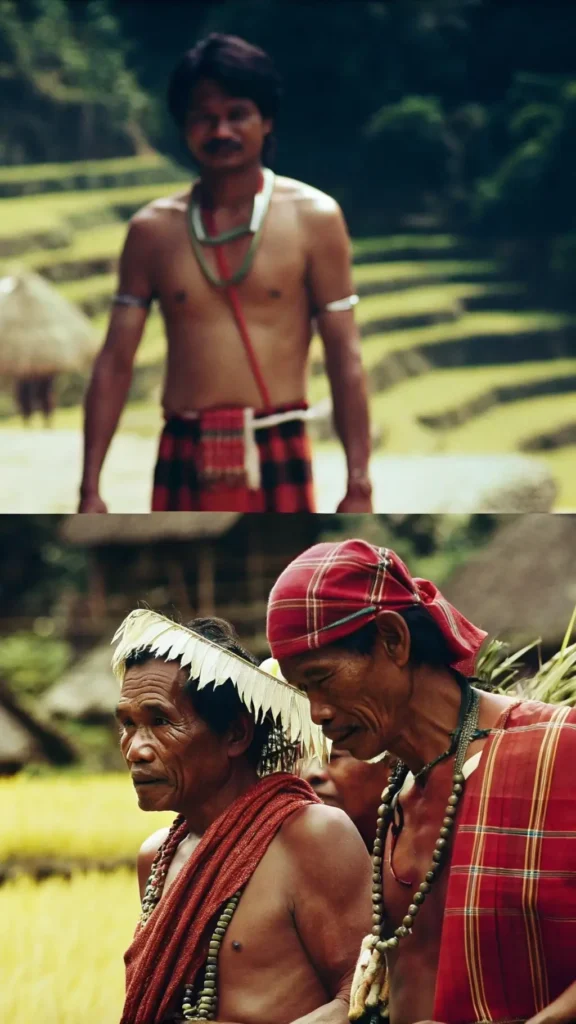
Mindanao Groups
The Lumad, a collective term for various indigenous tribes in Mindanao, share a common struggle for land rights. These tribes, including the Manobo, T’boli, and Bagobo, actively resist land encroachments caused by mining, logging, and agricultural expansion. Their efforts to protect their ancestral lands are often met with displacement and violence, yet they remain steadfast in advocating for their rights under laws like the Indigenous Peoples’ Rights Act (IPRA).
Peace-building efforts among Mindanao’s tribes are integral to maintaining harmony in regions affected by long-standing conflicts. Community-led initiatives, including mediation councils and intertribal dialogues, focus on resolving disputes and fostering unity. These actions demonstrate their commitment to preserving their culture while navigating socio-political challenges.
Certain Mindanao tribes, such as the Tausug and Maguindanao, have integrated Islamic practices into their traditional beliefs. This blend reflects their adaptability and highlights the diversity of indigenous cultures in Mindanao. Such integration often manifests in ceremonies, attire, and art forms, preserving both spiritual and cultural values.
Visayan Communities
Visayan indigenous groups, like the Ati and Tumandok, are known for their vibrant festivals and traditional crafts. Celebrations such as the Ati-Atihan Festival highlight their rich heritage through music, dance, and storytelling, while also strengthening communal bonds. Crafts, including weaving and basketry, preserve their cultural identity and provide economic opportunities.
The Ati community continues to face significant challenges in securing land rights and formal recognition. These issues stem from historical marginalisation and modern pressures from land development. Despite these obstacles, the Ati actively advocate for their rights, drawing attention to the broader struggles of indigenous peoples in the Philippines.
Visayan tribes contribute to Philippine culture through traditional music and dance, which often celebrate historical events and communal unity. These artistic expressions reflect their deep cultural heritage, adding to the richness of the nation’s identity.
Ancestral Lands Concept
Land Rights
The struggle for land rights among indigenous tribes in the Philippines, such as the Aetas, reflects their enduring effort to protect their ancestral domains, which are fundamental to their survival and cultural identity. These lands are not only their homes but also provide resources for farming, hunting, and gathering. Ancestral lands also hold spiritual significance, often serving as sacred sites for rituals and ceremonies.
The Indigenous Peoples’ Rights Act (IPRA) of 1997 was designed to address these issues by recognising indigenous ownership of ancestral domains. It provides a framework for securing Certificates of Ancestral Domain Title (CADT), which legally recognises these lands as belonging to Indigenous communities. Despite this, enforcement is inconsistent, with bureaucratic delays, underfunding, and opposition from private interests hindering progress. Many indigenous groups remain in prolonged disputes with government agencies and corporations seeking to exploit natural resources.
Land grabbing and development projects are among the most severe threats to indigenous land rights. Mining operations, logging, and agricultural plantations often encroach on ancestral domains, leading to displacement, deforestation, and loss of biodiversity. For the Aetas, such developments disrupt their subsistence lifestyle, which relies heavily on the land for food, medicine, and shelter. These projects also result in environmental degradation, undermining the sustainability of the ecosystems indigenous peoples have long protected.
Historically, colonisation displaced many indigenous groups from fertile lowlands to remote mountainous areas. This marginalisation limited their access to resources and exacerbated conflicts over land ownership. Today, indigenous peoples still face legal and political challenges when asserting their rights, often requiring alliances with NGOs and activist groups to amplify their voices.
Indigenous communities play a critical role in environmental conservation. Their traditional practices, such as slash-and-burn farming (kaingin) and forest management, are often misunderstood but are sustainable when practised correctly. These methods ensure the regeneration of natural resources and help maintain biodiversity. Recognising their land rights supports global goals in addressing climate change, deforestation, and habitat loss.
| Aspect | Details |
|---|
| Key Issues | Struggles to secure recognition of ancestral domains, lack of formal titles, and prolonged disputes with government and corporations. |
| Legal Framework | The Indigenous Peoples’ Rights Act (IPRA) of 1997 provides legal recognition of ancestral domains through Certificates of Ancestral Domain Title (CADT). Implementation remains inconsistent. |
| Threats | Land grabbing, mining, logging, agricultural expansion, and urbanisation lead to displacement, deforestation, and cultural heritage loss. |
| Cultural Significance | Ancestral lands are vital for indigenous identity, providing resources for subsistence, spiritual significance, and sites for rituals and ceremonies. |
| Environmental Role | Indigenous practices such as sustainable farming and forest management contribute to biodiversity, deforestation mitigation, and climate change efforts. |
How does IPRA impact land recognition?
The Indigenous Peoples’ Rights Act (IPRA), enacted in 1997 in the Philippines, significantly impacts land recognition for indigenous communities. Here’s how:
- Legal Recognition of Ancestral Domains:
- IPRA grants indigenous peoples the right to own and manage their ancestral domains and lands. This includes land they have occupied and used for generations, encompassing forests, pastures, residential areas, and even sacred sites.
- Certificates of Ancestral Domain Title (CADT):
- IPRA enables indigenous groups to obtain Certificates of Ancestral Domain Title (CADT), which serve as legal proof of their ownership over their ancestral territories. CADTs affirm their collective rights to the land and its resources.
- Control Over Natural Resources:
- The act allows indigenous peoples to manage and utilise natural resources within their ancestral domains. They can protect their territories from exploitation, such as mining or logging, unless they give free, prior, and informed consent (FPIC).
- Support for Cultural and Spiritual Ties:
- IPRA recognises the cultural and spiritual significance of ancestral lands. It acknowledges that these lands are integral to indigenous identity, traditions, and survival.
- Challenges in Implementation:
- While IPRA provides a robust legal framework, its implementation is inconsistent. Indigenous groups often face bureaucratic delays, lack of funding, and resistance from private and government entities, delaying the issuance of CADTs.
- Protection Against Displacement:
- The law protects indigenous peoples from being forcibly removed from their lands without their consent, offering a safeguard against displacement by development projects or land grabbing.
In summary, IPRA is a powerful tool for land recognition, providing legal and cultural validation of indigenous ownership. However, the effectiveness of its impact depends heavily on enforcement and the resolution of systemic barriers.
Future Perspectives
Promoting Indigenous Rights
Laws such as the Indigenous Peoples’ Rights Act (IPRA) and the United Nations Declaration on the Rights of Indigenous Peoples (UNDRIP) provide frameworks to safeguard indigenous lands and cultures. However, implementation is hindered by bureaucratic delays, political resistance, and external pressures from private interests.
The UNDRIP, adopted in 2007, sets global standards for the survival and dignity of indigenous peoples, but effective change requires inclusive governance. Indigenous communities need direct representation in decision-making processes that impact their territories and resources. While some regions show progress through land recognition and legal victories, many Indigenous groups continue to face challenges in securing their rights, highlighting the necessity for sustained global advocacy.
Sustainability and Culture
Indigenous tribes possess traditional knowledge systems that are critical for sustainability, including agroforestry, biodiversity preservation, and water conservation. These practices address environmental challenges and support sustainable development.
Collaborations between indigenous communities and organisations focus on blending traditional methods with modern technologies. Examples include:
- Reforestation projects using native species to restore ecosystems.
- Water conservation initiatives based on natural waterway management.
- Agroecological methods that combine crop rotation techniques with scientific farming practices.
These projects demonstrate the effectiveness of indigenous knowledge in supporting environmental conservation and empowering communities economically while preserving their cultural heritage.
Final Remarks
The indigenous tribes of the Philippines embody a rich cultural heritage rooted in resilience, tradition, and a deep connection to ancestral lands. Despite facing challenges like displacement, environmental threats, and cultural erosion, their vibrant practices and knowledge systems remain invaluable.
Preservation efforts, including legal protections and sustainable initiatives, are vital to safeguarding their identity and contributions to global cultural diversity. Supporting these communities through advocacy, education, and cultural exchanges ensures their legacies endure for generations. By valuing and respecting their heritage, we contribute to a future where these cultures continue to thrive.
Frequently Asked Questions
How many indigenous tribes are there in the Philippines?
There are over 110 indigenous tribes across the Philippines, each with its unique culture and traditions.
What are some unique traditions of Philippine indigenous tribes?
Indigenous tribes celebrate through vibrant festivals, traditional dances, and rituals that honour their ancestors and nature.
Why is preserving indigenous cultures important?
Preserving indigenous cultures safeguards their unique traditions, languages, and knowledge, contributing to global cultural diversity and heritage.
Can you name a few indigenous tribes in the Philippines?
Notable tribes include the Igorots of the Cordilleras, the Lumads of Mindanao, and the Aetas of Luzon.
What challenges do indigenous tribes face today?
Indigenous tribes face challenges like loss of ancestral lands, environmental degradation, and cultural assimilation threatening their way of life.
How does the concept of ancestral lands affect indigenous tribes?
Ancestral lands are central to indigenous peoples’ identity, spirituality, and survival, making their protection vital against encroachment and exploitation.
What are future perspectives for the preservation of indigenous cultures?
Efforts focus on legal protections, educational programs, and sustainable development initiatives to ensure indigenous cultures thrive for generations.
